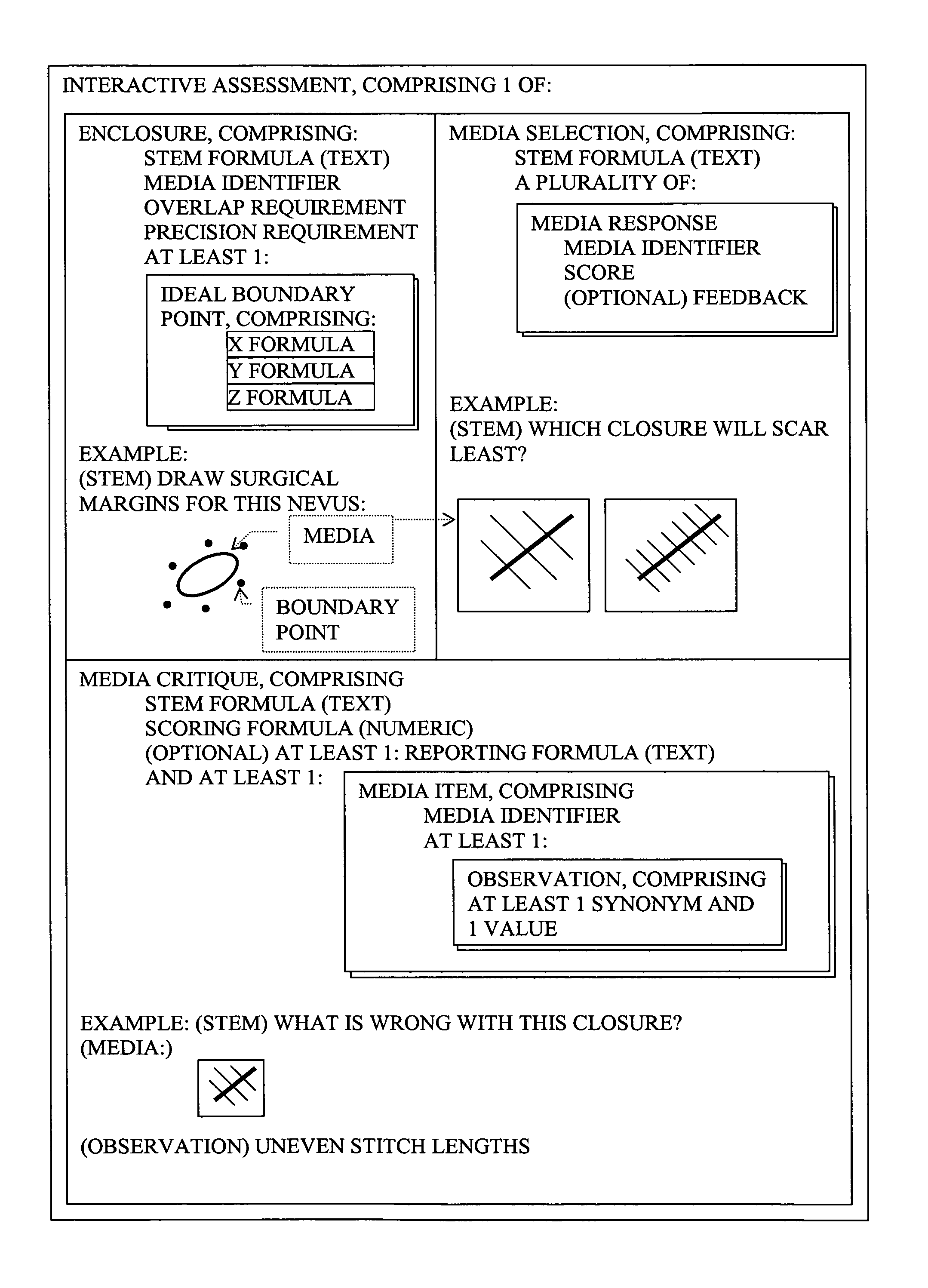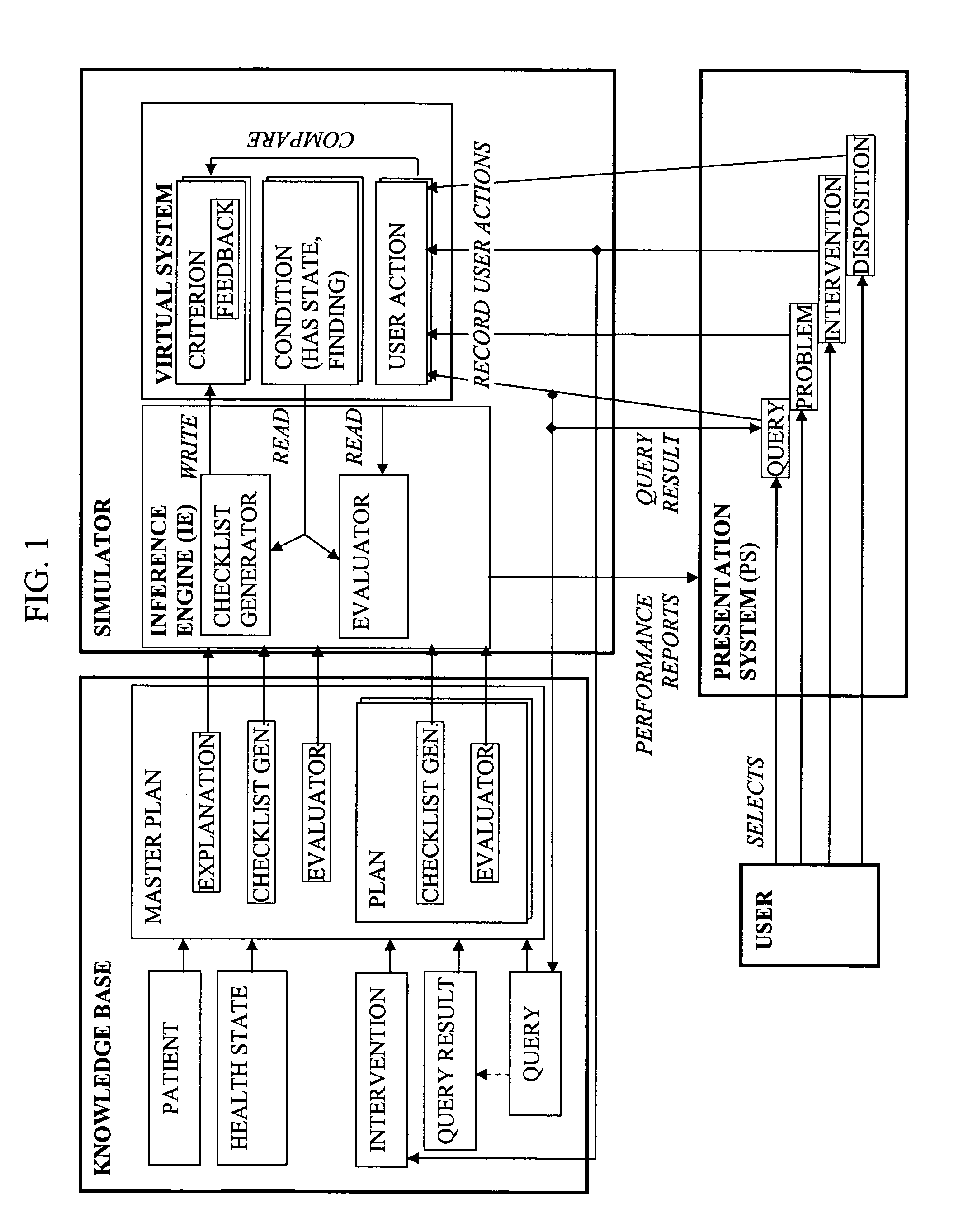Computer architecture and process of user evaluation
a computer architecture and user evaluation technology, applied in the field of computer architecture and user evaluation, can solve the problems of paper and static computer cases generally not being able to anticipate the progress of virtual patients through subsequent visits, and the degree of difficulty of attraction response may be said to confer a degree of difficulty, so as to facilitate the reconfiguration of simulations
- Summary
- Abstract
- Description
- Claims
- Application Information
AI Technical Summary
Benefits of technology
Problems solved by technology
Method used
Image
Examples
Embodiment Construction
The Simulation System
[0050]The computer-implemented evaluation system described herein is most advantageously implemented in conjunction with a simulation system that comprises an optional administrative database associating a plurality of users with individualized test requirements and recording the users' performance; a knowledge base describing a complex system and related data; a computer program for simulating an instance of a complex system from the data in the knowledge base; and a component for presenting patient information to a user and accepting Queries and Interventions from the user. These components are hereafter referred to as the administrative database, the knowledge base, the simulator, and the presentation system. The knowledge base provides data to the simulator and presentation system. The simulator uses the data to instantiate a virtual system, for instance a virtual patient. The presentation system allows the user to inspect the virtual system and attempt to c...
PUM
 Login to View More
Login to View More Abstract
Description
Claims
Application Information
 Login to View More
Login to View More - R&D
- Intellectual Property
- Life Sciences
- Materials
- Tech Scout
- Unparalleled Data Quality
- Higher Quality Content
- 60% Fewer Hallucinations
Browse by: Latest US Patents, China's latest patents, Technical Efficacy Thesaurus, Application Domain, Technology Topic, Popular Technical Reports.
© 2025 PatSnap. All rights reserved.Legal|Privacy policy|Modern Slavery Act Transparency Statement|Sitemap|About US| Contact US: help@patsnap.com



